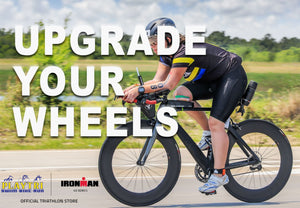
Taking The Guess Work Out of Your Nutrition Plan
If you are reading this article, you’re probably wondering how you can recover better, train more consistently, and race faster. Whether you are a single sport or multi-sport endurance athlete you need to know how to fuel your engine more effectively. The body primarily utilizes fat and carbohydrates as fuel to create energy for muscle contractions. Your “engine” has two fuel “tanks”. One contains the carbohydrate calories and the other contains the fat calories and the rate at which your engine draws from each varies with effort. If you know this rate you will know how to effectively refill the appropriate tanks. These numbers will reflect how you should be pacing in long course racing and how to train so you can improve your “fat efficiency.”
The leanest, lightest marathon runner can have 80,000+ calories in their fat fuel tank, while their carbohydrate tank could have only 1600-2500 calories available. Athletes commonly burn 400 to 800 calories/hour, which will empty their carbohydrate tank rather quickly if the body is pulling heavily from that source. At low levels of exertion, an athlete’s engine will burn more fat but as the effort increases will become more dependent on the carbohydrate tank. Carbohydrates are more bioavailable as “quick fuel” compared to the slow burning fat.
Performing a VO2 Calorie Expenditure Test at Playtri will produce several useful insights. It will give you specific, usable data at varying heart rates, including how many calories you are burning per hour, and how much is coming from carbohydrates versus fat. Overuse of carbohydrates is a common issue for endurance athletes (whether due to general inefficiency of fat use, or poor pacing decisions in a specific session or race), especially in longer distance events. You may be an inefficient fat burner and begin burning your carbohydrates early in the effort curve. The earlier your engine leans on the carbohydrate tank, the earlier you will run out of fuel and experience a “bonk.” “Bonking” is what marathoners and IRONMAN athletes experience when they talk about “hitting the wall.” You feel lethargic and can’t push your body beyond the fat burning effort because you are out of carbohydrate fuel.
The good news is that you can train your fat efficiency. When we have an athlete who discovers this limiter, we adjust their training in a few ways. First, we stress to them the importance of having a good daily balance of calories from healthy macronutrient sources to include a variety of macronutrients and micronutrients at each meal. We can help them periodize nutrition based on training and competition by ensuring they are following adequate macronutrient timing to fuel hard workouts with carbohydrates and have them perform some low intensity activities fasted. These efforts are all assigned based on the heart values from the test that we know are burning primarily fat. We only use this method with athletes that are disciplined enough to stay in their heart rate zones because otherwise they can deplete themselves greatly and need a long recovery period to prevent injury and/or illness, meaning we aren’t able to get the training we need.
Vo2 calorie testing with Playtri can also revolutionize the way you plan your race nutrition (we call it our “secret weapon”). We always encourage our athletes to have this testing done 1-2 weeks prior to long course races, and directly apply the information we get to our pacing and nutrition planning. We aim to replace carbohydrate calories on a one-to-one basis, and pace so that we are able to absorb enough fuel for this purpose. Fortunately, a substantial body of evidence suggests that the GI system is highly adaptable and can be trained to achieve your fueling goals. If you have a heart rate target for your race, this test will give you a carbohydrate fueling target. If you don’t feel comfortable consuming that many calories right now, you can work your way up.
In long course triathlon racing, nutrition becomes the “Fourth Discipline”, and you must train it to be successful in the same manner you train your swim, bike, and run. Once you have your caloric needs identified you will need to begin training your gut to handle the volume and trying different flavors and consistencies to find what plan works best for you. We have athletes that get tired of gels and need more solid foods and others that can handle all gels but get nauseated by a flavor after so many. At Playtri, we carry a variety of brands and products so you can maintain the variety in your fueling plan.
Visit the online store to view just some of the products we carry. Visit a location near you to see more products.


